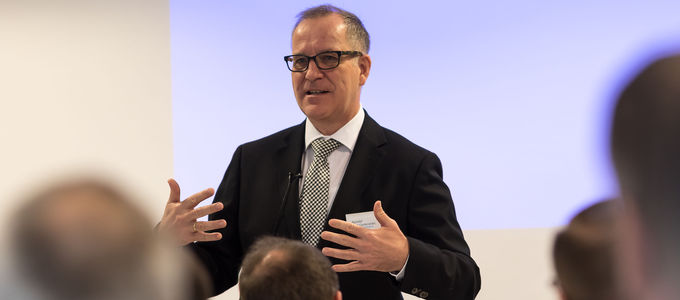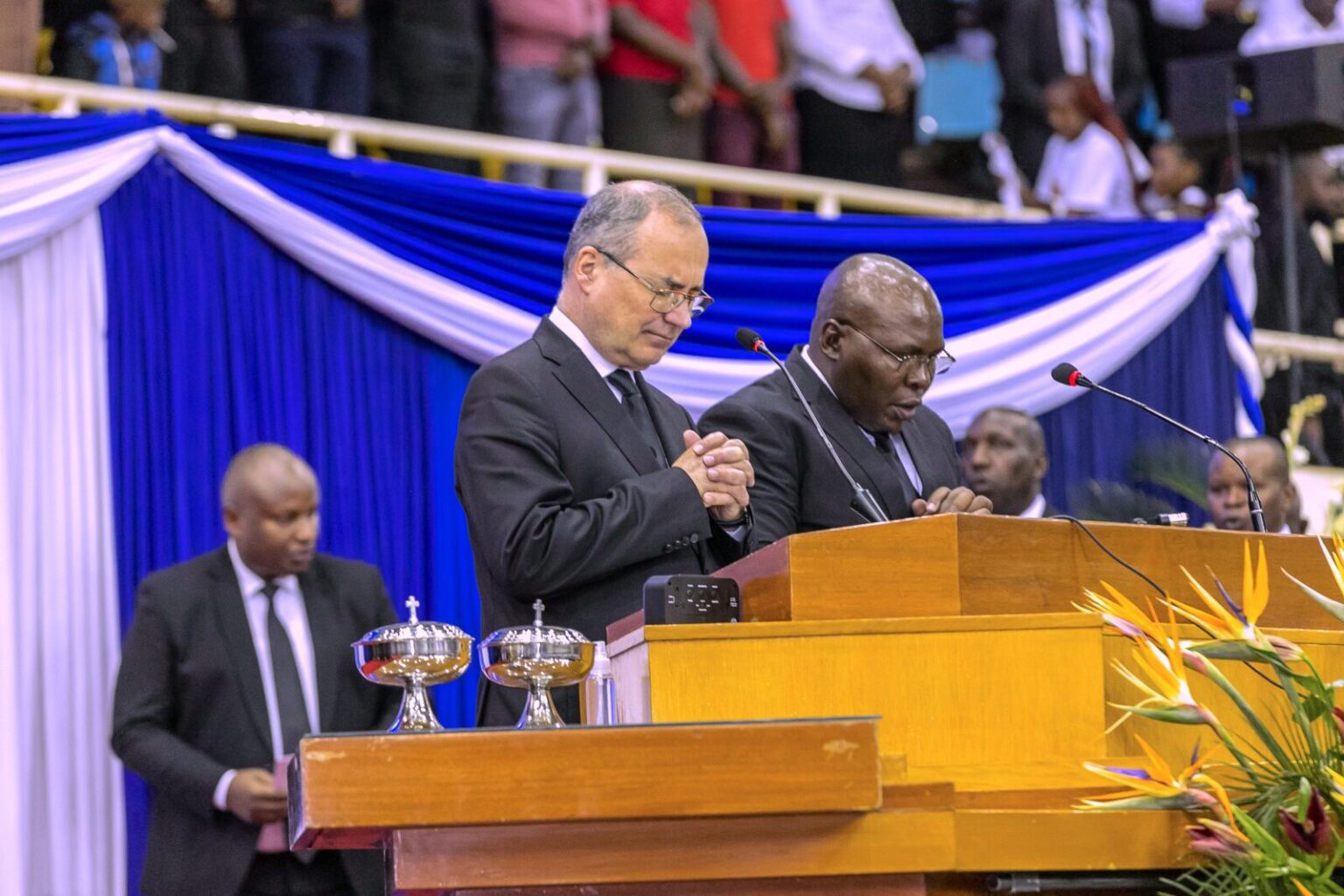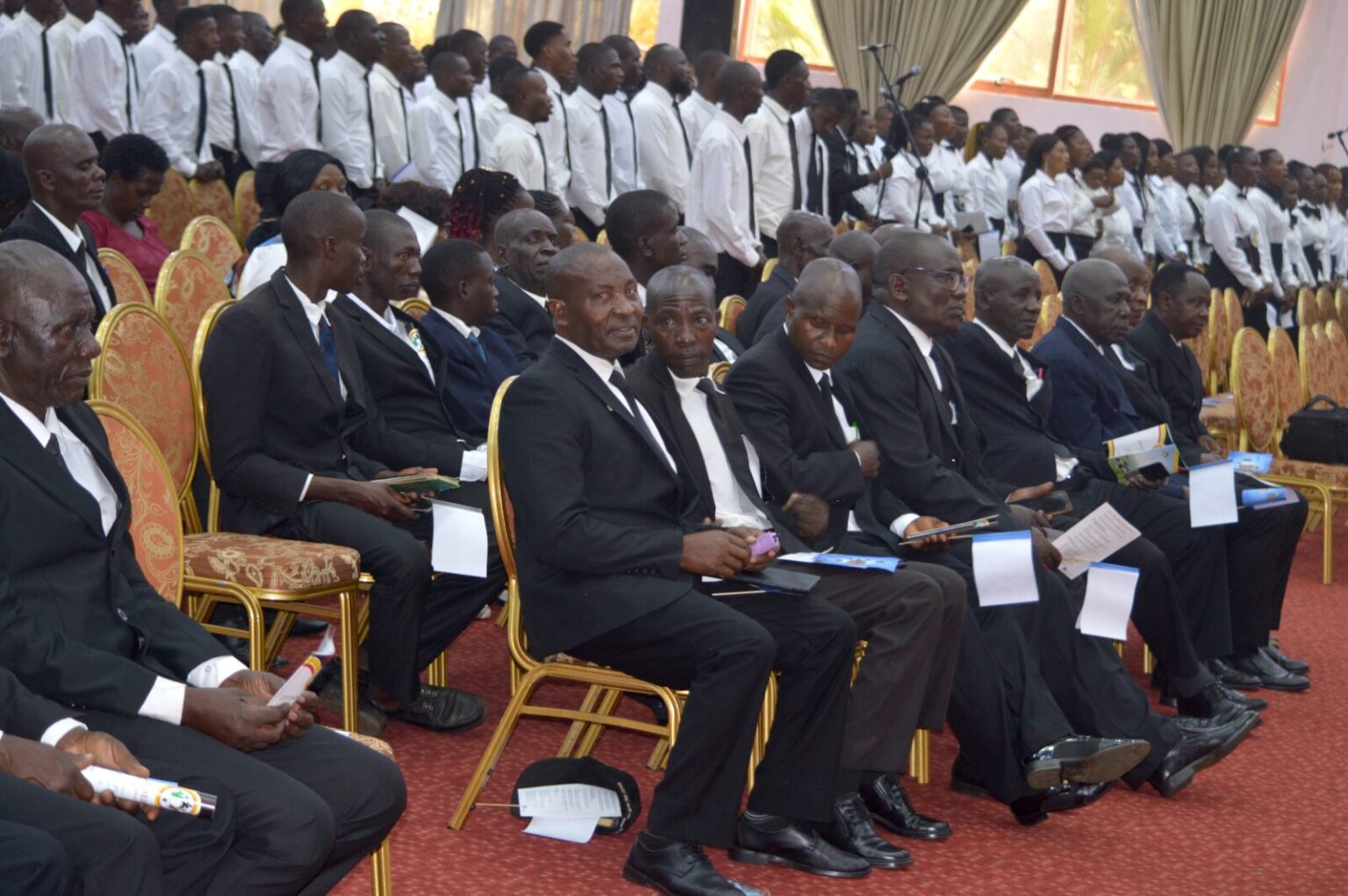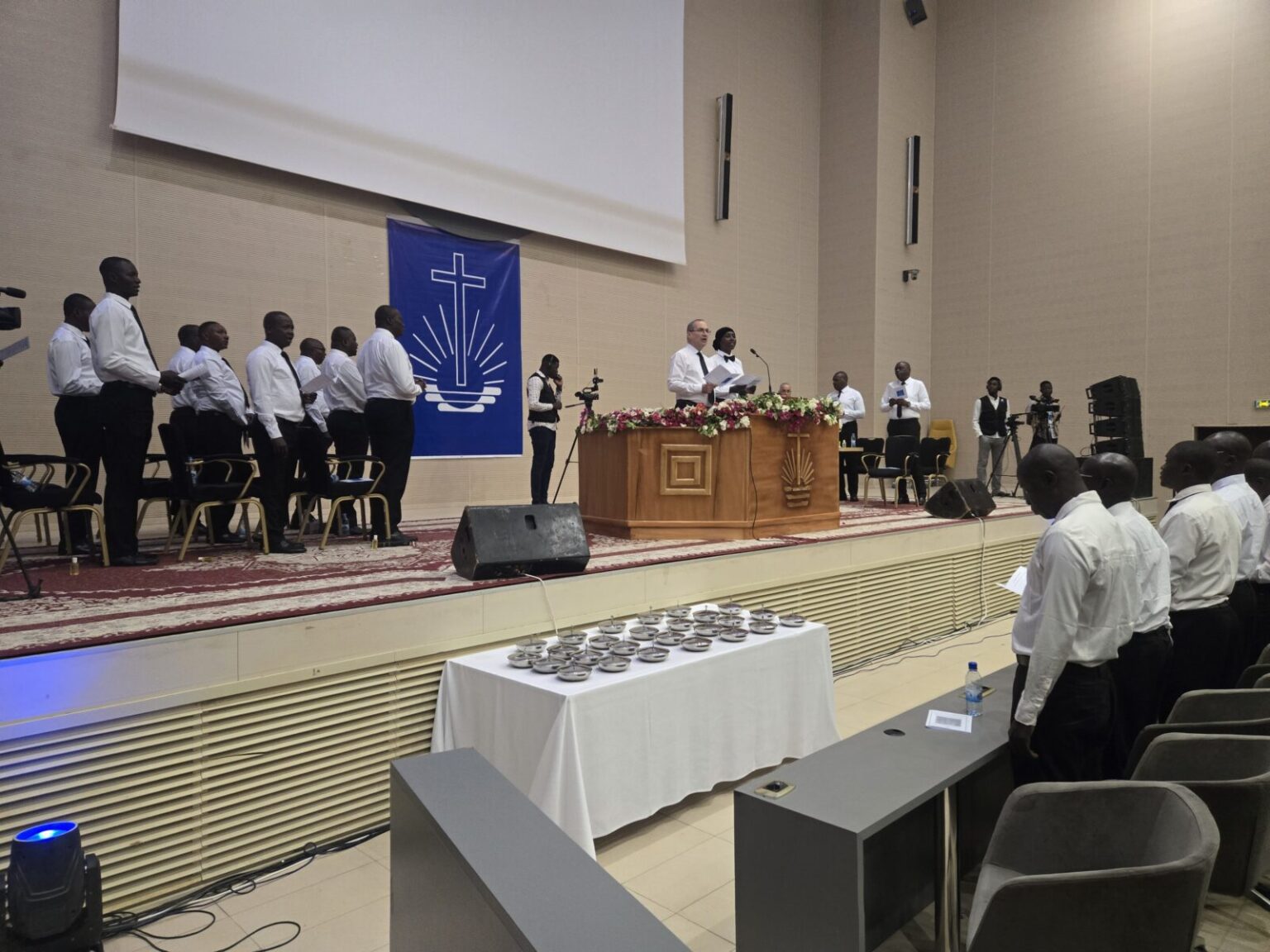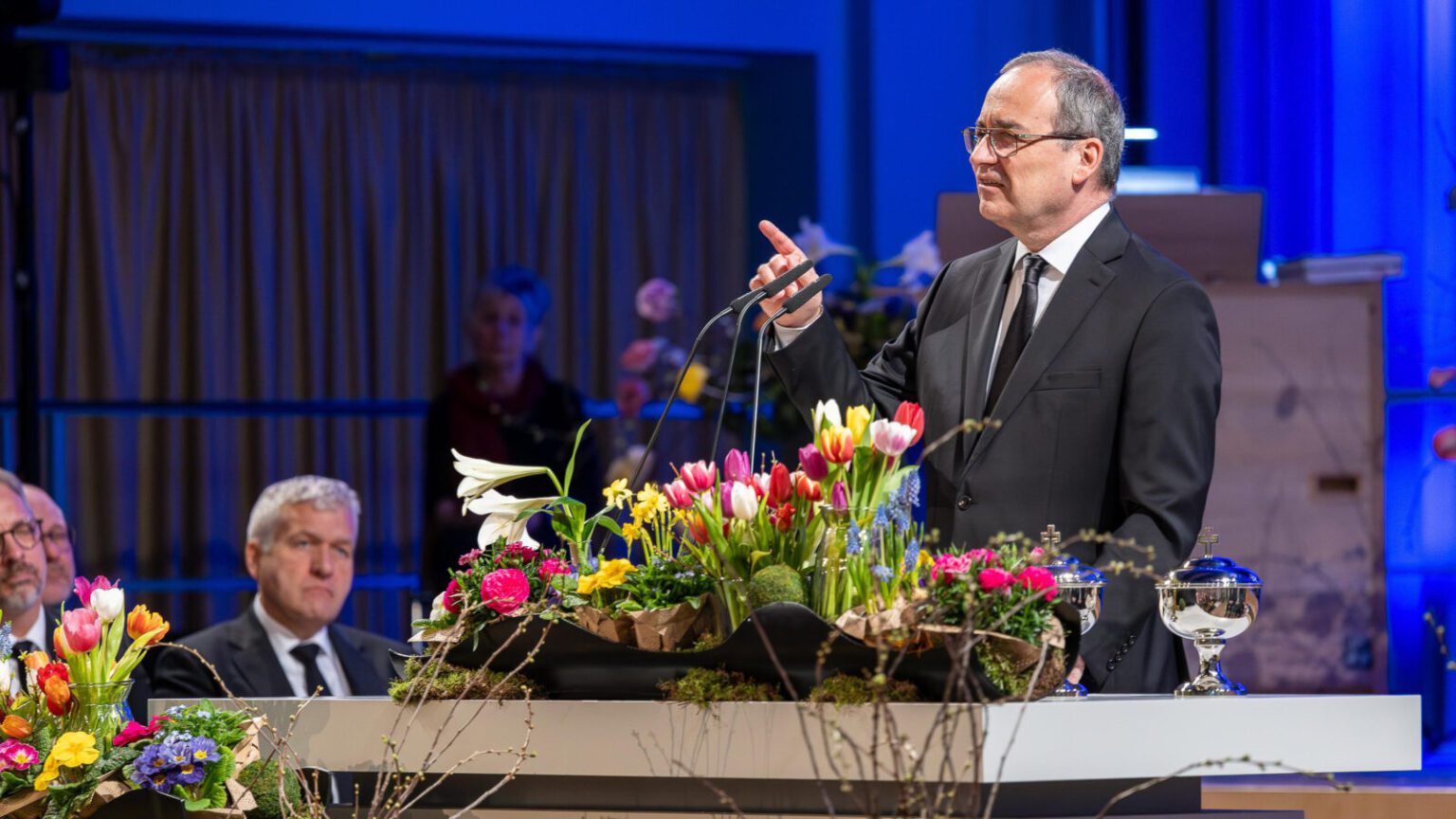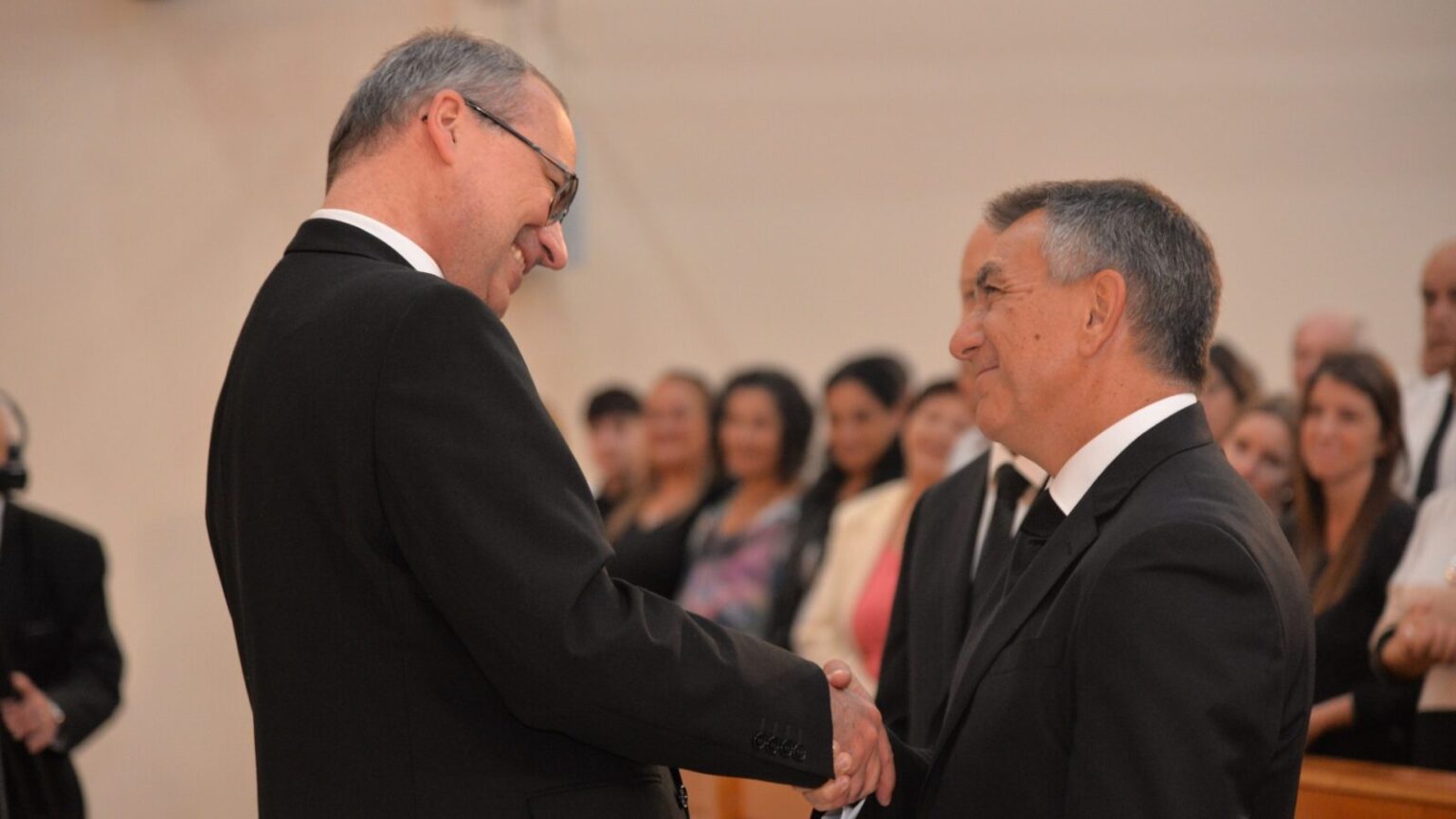

On Pentecost 2019 our new concept of ministry will come into effect. In the same week that the video presentation took place, information events began. It became clear that there is more to it than merely a structural change.
It was one of the first, if not the first, information event on this subject across the global Church: last Saturday about sixty ministers hit the books, so to speak, in our central church in Wiesbaden (Germany). They will be the speakers who, in the coming weeks and months, will be informing the other active ministers, retirees, and interested members in their districts.
The ministers could hardly have wished for a more competent speaker: the information event was led by Apostle Gert Opdenplatz. Few others outside of the District Apostle Meeting have been accompanying this subject as intensively as he in recent years in his capacity as chairman of the Church’s Working Group Questions of Faith.
Change has its roots in tradition
Since its beginnings, the New Apostolic Church has understood itself as a church with a hierarchical structure, it says in the Catechism. The Apostle pointed out that there have been changes to the structure over time. More recent examples of ministries that are no longer being occupied are the congregational Elder and the Subdeacon, as well as the Apostle Helper of earlier years.
Working groups began to occupy themselves with the concept of ministry already in the time of Chief Apostles Hans Urwyler and Richard Fehr—and most recently under Chief Apostle Wilhelm Leber. At the time that our doctrine was comprehensively defined and set down in writing, the concept of ministry was initially only outlined in order not to delay the publication of the Catechism.
Three pillars, one foundation
The Apostle presented the teaching of the New Apostolic Church as a building—with the gospel as its foundation and three supporting pillars.
- These pillars include our understanding of the sacraments, which was defined under Chief Apostle Fehr. Since then, any baptisms administered in other Christian churches are recognised in our Church.
- A second pillar is our understanding of church, which was defined under Chief Apostle Leber. The New Apostolic Church no longer understands itself as the sole constituent of the church of Christ.
- The concept of ministry that has just been presented is based on the same key as our understanding of church and our understanding of the sacraments: the doctrine of the dual nature of Jesus Christ.
These are some of the theological aspects on which Chief Apostle Jean-Luc Schneider based his video address and which will now be elaborated on in the training sessions.
Explanations coming up
The objective of these information events is to present the new ministerial structure, to clarify the distinction between ministry and service, and to explain how the various ministries and functions will be installed. For this purpose, the speakers will be equipped with a package of presentation slides, supplemented by explanations in point form as well as in more detailed form. These include references for further reading in the Catechism and other background material.
Depending on the District Church, information events for the ministers have already been scheduled—most of them in May. In the meantime, active and retired ministers can familiarise themselves with the topic. A special edition of the Divine Service Guide (No. 2/2019) is on its way. It sums up the most important points of the previous publications, describes theological foundations, and provides underlying reasons.






